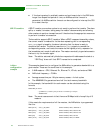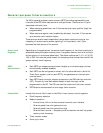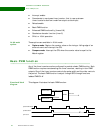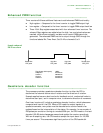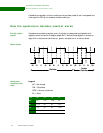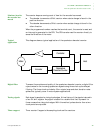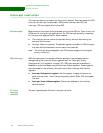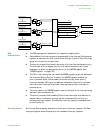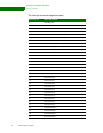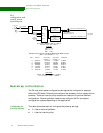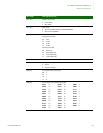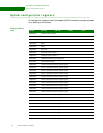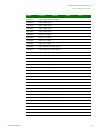
SYSTEM CONTROL MODULE
Interrupt controller
148 Hardware Reference NS9215
. . . . . . . . . . . . . . . . . . . . . . . . . . . . . . . . . . . . . . . . . . . . . . . . . . . . . . . . . . . . . . . . . . . . . . . . . . . . . . . . . .
Interrupt controller
The interrupt system is a simple two-tier priority scheme. Two lines access the CPU
core and can interrupt the processor: IRQ (normal interrupt) and FIQ (fast
interrupt). FIQ has a higher priority than IRQ.
FIQ interrupts Most sources of interrupts on the processor are from the IRQ line. There is only one
FIQ source for timing-critical applications. The FIQ interrupt generally is reserved
for timing-critical applications for these reasons:
The interrupt service routine is executed directly without determining the
source of the interrupt.
Interrupt latency is reduced. The banked registers available for FIQ interrupts
are more efficient because a context save is not required.
Note:
The interrupt source assigned to the FIQ must be assigned to the highest
priority, which is 0.
IRQ interrupts IRQ interrupts come from several different sources in the processor and are
managed using the Interrupt Config registers (see “Int (Interrupt) Config
(Configuration) 31–0 registers” on page 175). IRQ interrupts can be enabled or
disabled on a per-level basis using the Interrupt Enable registers. These registers
serve as masks for the different interrupt levels. Each interrupt level has two
registers:
Interrupt Configuration register. Use this register to assign the source for
each interrupt level, invert the source polarity, select IRQ or FIQ, and enable
the level.
Interrupt Vector Address register. Contains the address of the interrupt
service routine.
32-vector
interrupt
controller
The next figure shows a 32-vector interrupt controller:



